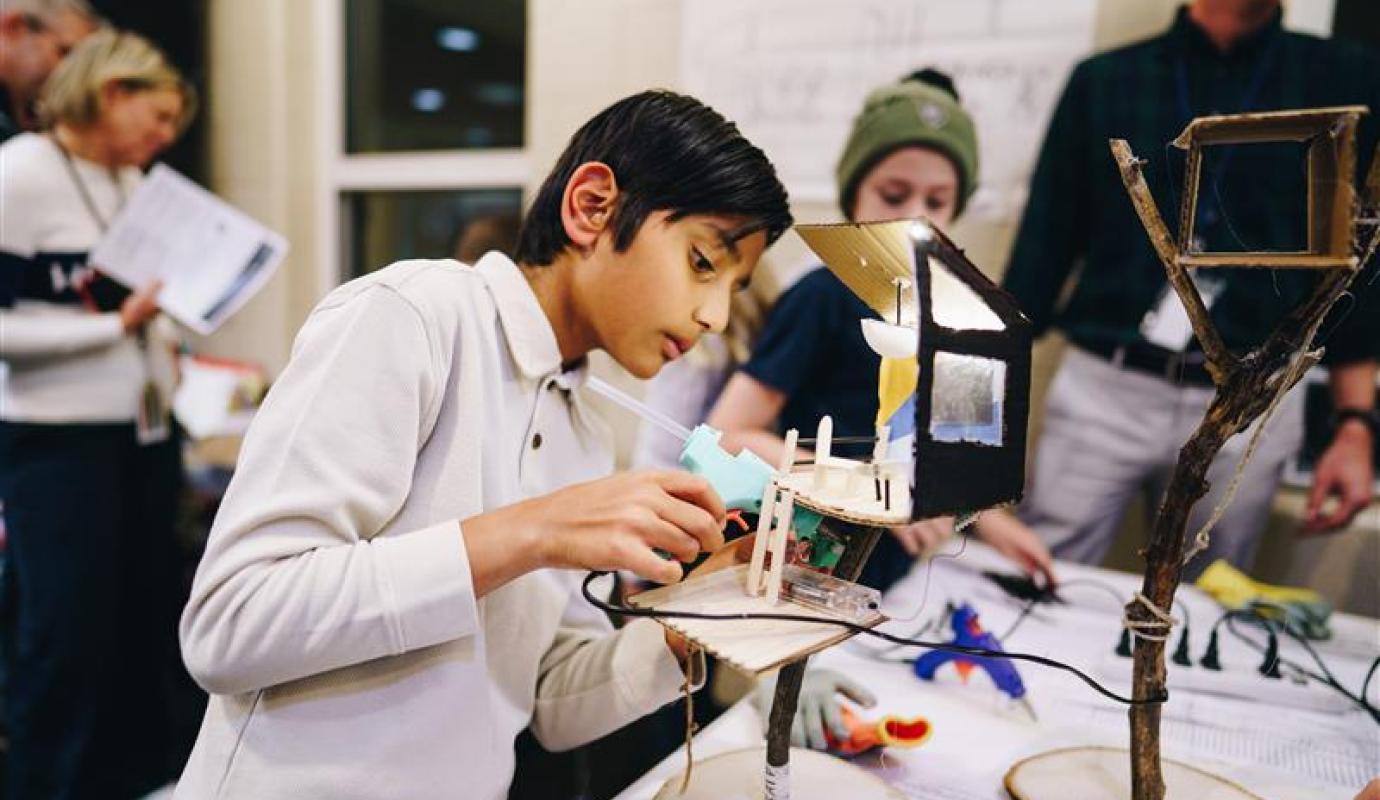Students from preschool through grade 12 took center stage at Wellington’s first Learning Showcase, demonstrating how curiosity, creativity, and science come together when learners become teachers.
What to expect in this blog:
- Highlights from Wellington’s first Learning Showcase, featuring 70 student presenters across 27 stations
- A look at how explaining and teaching concepts supports developing brains, backed by neuroscience research
- Student stories that bring the event to life, from a two-story treehouse and massive theatre prop to an all-French dialogue
Wellington’s first Learning Showcase invited students from early childhood through grade 12 to step into the role of expert and share their discoveries with families, peers, and community guests. About 70 students presented across 27 stations, each one offering a glimpse of curiosity, creativity, and challenge in action. The event was envisioned by Shelley Brown P ’32 ’33 ’38, assistant head of school for academics and head of early childhood and lower school, as a way for students to experience the joy of explaining their own learning and for the community to see it in motion.
Research in neuroscience and education confirms what the evening made visible: when students teach or present what they have learned, their brains engage more deeply. Studies published in CBE—Life Sciences Education, Neuroscience & Biobehavioral Reviews, and The Neuroscientist show that explaining concepts to others strengthens neural pathways tied to memory and comprehension, helping information move from short-term to long-term memory. Active learning also builds confidence, attention, and metacognition, the awareness of how one learns, which are all critical for developing brains.
That research came to life through projects like Rowe Apfelstadt ’34’s two-story treehouse design, complete with a popsicle-stick fishing dock, working pulley system, and greenhouse-style upper level with a skylight. Her project blended imagination with principles of balance and engineering. Nearby, Jackson Remley ’28 described how he and his peers used rolls of chicken wire to construct a massive brain prop for the upper school’s upcoming production of “A Wrinkle in Time.” Through teamwork, trial, and a few 48-foot rolls of wire, the group found creative ways to turn an abstract idea into a physical structure. “Theatre tech has so many parts,” said Jackson. “Some people like lighting or sound, but I really love building props because you get to see the whole show come together.”
Upstairs, middle school students performed a full dialogue entirely in French, complete with a custom slideshow and props they designed themselves. No English was spoken, but the meaning was clear through their expression and poise. In another room, upper school history students reversed roles with their teacher, leading discussions on World War I and its global ripple effects. These moments illustrated the evening’s theme: that deep understanding comes when students can explain, connect, and reflect on their learning.
As Ms. Brown reflected afterward, “It was inspiring to see students teaching others and teachers watching with pride, knowing this is what real learning looks like.” That spirit filled every classroom and hallway, from the laughter of families asking questions to the quiet pride on students’ faces as they shared their work. The Learning Showcase captured what makes Wellington extraordinary—confident, curious students who learn by doing and by sharing their discoveries with others.
